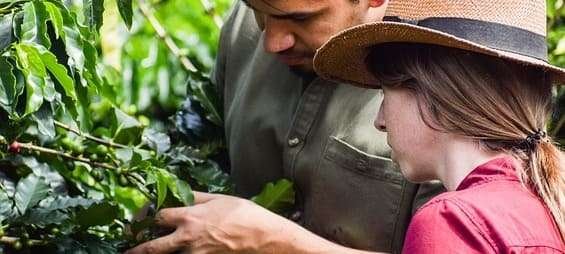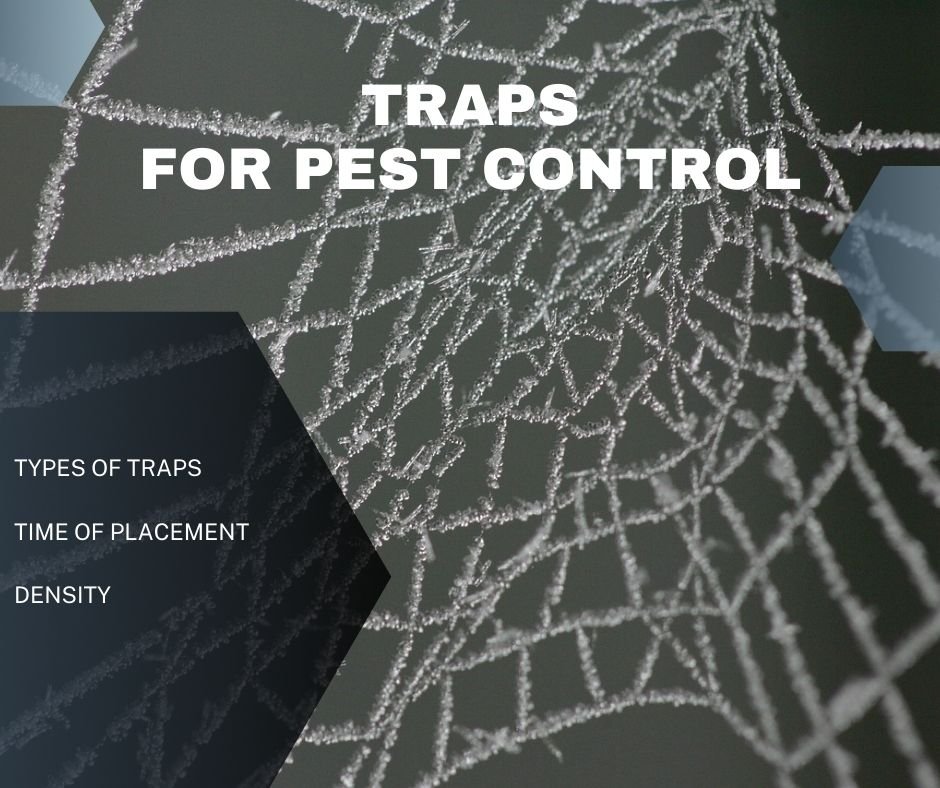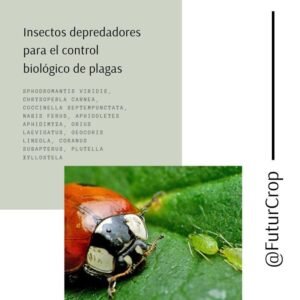
Contents
Traps for pest control
Traps for monitoring or mass capture
Traps for pest control can be distinguished by their function in traps for monitoring, or for mass capture. In the first case, traps make it possible to detect early the presence of certain pest species in the growing areas. They provide information that technicians use to decide where and how to apply treatments. The mass capture of a pest by traps has been successful in the case of certain fruit flies, such as the Mediterranean fly (Ceratitis capitata). The attraction trap is usually combined with some toxic bait, in a technique known as “attract and kill”. Traps baited with ammonium salts and amines are used for the management of populations of this pest.
The difference between the use of traps for detection and monitoring, or for mass trapping is actually in the density of traps per crop.
Types of traps
Chromatic traps
They are rigid and resistant plastic plates, and adhesive on both sides. They necessarily have to be water repellent, that do not deteriorate with high temperatures and that do not contain toxic substances.
Pest insects (but also some beneficial insects) are attracted to certain colors, especially the following:

- Yellow: The yellow chromotropic plates are the most used, as they are especially effective for the detection and capture of diptera and aphids, such as whitefly, leafminers, sciarid fly, aphids, some Lepidoteros such as Tuta absoluta. As already stated, they have the drawback that they also capture beneficial insects. They are species sensitive to chromatic traps, Coenosia atenuatta, Aphidius, Aphelinus, lysiphlebus, Aphytis, Encarsia, Orius, Nesidiocoris, Chrisoperla and many other predatory species among which are most of the coccinellids. It is important to note that, when populations of these auxiliary insects are low, their possible negative effect must be considered.
- Blue: Blue and light blue plates are especially effective for detecting and capturing thrips. This color is used less for traps because its power of attraction is lower. The ability to attract fewer insects can be useful when we try to protect auxiliary fauna, for example trichogramma, to ensure natural control of other secondary pests.
- Black: They have enough acceptance to protect the crops from the action of the Tuta absoluta, which is attracted by dark colors such as black, but do not attract an important natural enemy of the Tuta, the myrid bug Nesidiocoris tenuis.
- To a lesser extent, other colors are used, such as white for capturing tripids and red for capturing beetles.
Pheromone traps
They use a synthetic attractant that simulates the natural pheromone emitted by females to attract males (by attracting only males, it does not increase the risk of oviposition). It is necessary to take into account the density of traps placed per surface, because if more traps are placed than the appropriate ones, the call effect disappears and the total number of captures does not increase.
Delta Traps
Generally used for monitoring populations, their arrival and evolution. They basically consist of a pheromone diffuser placed on a horizontal and sticky sheet, covered by a roof. They are not used to make mass captures of insects.
Water traps
The pheromone diffuser is placed in the center of a sheet of water, so that when the moth touches the water it can no longer take flight.
Transparent tapes
sticky impregnated with the selected pheromone. They are usually used in greenhouses, where they are placed in strips along the growing rows. Its effectiveness depends largely on its correct installation, it can be limited by dust inside the installation.
As in the case of chromatic traps, and following the same principle of attracting and killing, pheromones and toxic baits are usually used together.
Light traps
In general, light traps tend to attract females more than males. Traps placed close to the ground trap a larger number of males, while raised traps trap a larger number of females. Light traps have a high cost and maintenance. But their biggest problem is that they are not very selective, eliminating pest insects as well as auxiliary fauna.
The death of the moth is carried out with water, insecticidal liquid or by electrocution in electrified grids.
Other traps
In addition to the traps mentioned, there are traps on the market that try to be more specific in the type of pest they catch, for example according to the flight characteristics of the target pest. For their capture they use the previous techniques applied to containers.
There are the so-called flycatchers, which carry the entrance holes for the insect at the bottom, and which are designed for the capture of diptera (flies). And containers that carry the entrance openings at the top, are traps designed to catch lepidoptera, and are called pollilleros.
Manufacture of homemade traps for pest control
Commercial traps cost a hectare needs about 30 traps, for example, to monitor the fruit fly. For mass captures, at least that number of traps would have to be doubled. But making traps with recycled materials is very simple.
- To build chromatic traps it is enough with a plastic the size of a sheet, of the colors indicated above, coated on both sides with an adhesive, honey, petroleum jelly or with a cooking oil (it can be a used oil).
- For other types of traps we must add a container container (such as a bottle, or a cabin built with cardboard and lined with plastic) adding an attractant (which can be pheromones, remains or fruit juice, diammonium phosphate, or commercial food attractants) and a method of eliminating the pest, such as liquid soap, water or the food attractant itself if it is liquid.
If a container trap is used it is very important that the entrance holes are of the right size so that the pest insect can enter, but the entry of beneficial insects is avoided.
The time of placement of the traps
Each pest has its biological cycle and a number of generations per year that can be variable, depending on the weather. Therefore, to improve the effectiveness of the traps, it is advisable to know exactly in each area which are the moments in which the pest is active in adulthood, and the different generations.
In the USA, several universities offer a local calculation service based on phenological models that relate temperature to the development of pests. This information is used by farmers to determine when to place traps or the ideal time to carry out treatments.
FuturCrop automatically calculates the life cycle of 179 pest species, for fields anywhere in the world, and provides specific information for each stage of development that allows optimizing monitoring and treatment. The software is a great help and an important saving when using traps as a means of monitoring and / or pest control.


In general, it is recommended to use traps before the start of the first generation of the target pest. Setting traps too early is an unnecessary expense, as all types of traps have a limited duration and require maintenance. But, setting traps too late can make them inefficient if mass captures are intended, because mass trapping tries to decrease the population of the pest when it is at low levels. If the population density of the pest is high, the effectiveness of trap captures decreases.
FuturCrop creates a calendar of the biological cycle of pests with climatological data updated daily. In such a way that it is possible to establish the moment that most interests us to make the captures of the first generations.

Placement of traps: height and position
The placement of traps is important for catches to be meaningful. In general we must place the traps at the height of the crop, and raise them as it grows. In greenhouses traps should be placed on the bands, windows, doors, etc. It is better to place the plates in a row, leaving between them a distance that should not be more than 2 meters. If biological control insects are released that fly, we must remove part of the traps if we detect high catches of auxiliary organisms.
In outdoor crops, traps should be placed at different heights, depending on the crops, the type of trap or even the type of pest. For example, the placement of the traps varies depending on the color of the chromatic trap:
- The yellow and blue chromatic traps must be hung vertically. In crops such as tomato, cucumber and pepper, traps should be placed just above the plant and raised as the crop grows. In crops with little cover, traps should be held by wire up to a maximum of 30 cm above the crop.
- The black traps must be supported horizontally, taking into account that it does not stick to the support surface, in order to take advantage of both sides.
In trees, traps should be placed on the south face of trees, and avoid direct exposure to the sun in summer. They will be well placed among the foliage, at 1.60-190 m (taking into account the characteristics of the tree, neither too low nor in the treetop).
Density of traps
The number of traps per crop varies depending on whether they are intended to provide sampling information or mass capture of the pest. In addition, many factors determine the correct number of traps to place, such as the population density of the pest, bordering crops, etc. In general, 1 to 2 pheromone traps per hectare may be sufficient for pest detection and monitoring; and 10 to 20 traps for mass capture. In general, more chromatic traps per hectare are needed (30 for example for fruit fly monitoring). Manufacturers usually give instructions in this regard.

FuturCrop calculates short-term forecasts of the activity of 179 agricultural pests, based on accumulted temperature thresholds associated with critical stages of their life cycle.
FuturCrop forecasts indicate, for a given day, the stage of the pest’s life cycle and the day for the most efficient treatment.








